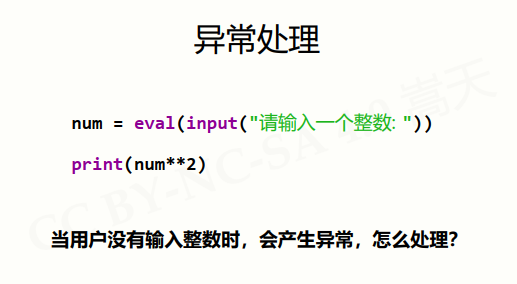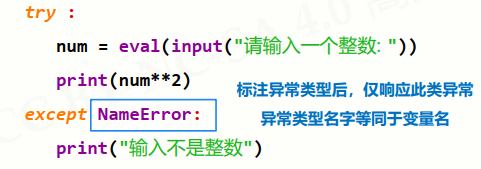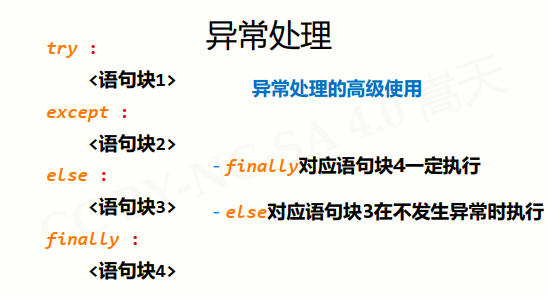Python基础【第四周】:异常处理、循环、随机
一.异常处理
案例说明:

解决:
try:{语句块1}
except{语句块2}
1 #demo1.py 2 #异常处理 3 answer = 99 4 while True: 5 try: 6 user = eval(input("please input a number:")) 7 if user == answer: 8 print("you are right") 9 break 10 else: 11 print("you miss it") 12 except: 13 print("please input a suitable number:")
输出:
1 please input a number:77 2 you miss it 3 please input a number:kobe 4 please input a suitable number: 5 please input a number:99 6 you are right
注:try except 只是处理异常时使用,try:{语句1},语句1就是可能会出现异常的语句,except:{语句2},语句2就是出现异常的处理。这是最常用的方法,下面还有两个
first:

second:

代码:
1 answer = 99 2 while True: 3 try: 4 user = eval(input("please input a number:")) 5 if user == answer: 6 print("you are right") 7 break 8 else: 9 print("please input again") 10 except: 11 print("Exist Exception") 12 else: 13 print("No Exception") 14 finally: 15 print("I will output anytime")
输出:
please input a number:7 please input again No Exception I will output anytime please input a number:yh Exist Exception I will output anytime please input a number:99 you are right
注:上述程序有点问题,为什么输入99时,程序else:print("No Exception")为什么不输出?按道理来说,for 、while、try:{语句1},后面加else:{语句2},是当{语句1}没问题时才运行{语句2},这里为什么不执行?
关于else的用法可见:https://blog.csdn.net/py_tester/article/details/78336226
关于随机库random的用法可见:https://www.cnblogs.com/dadahuan/articles/9464038.html





